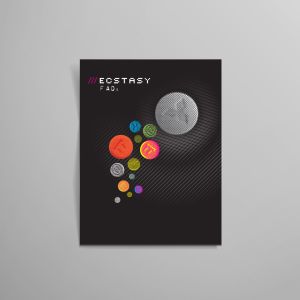What is ecstasy?
Ecstasy 3,4-methylenedioxymethylamphetamine (MDMA) is a man-made stimulant and is part of the Phenethylamine family of drugs to which speed, Mephedrone and other new and emerging highs are related.
Does it Have Any Other Names?
Some street names for ecstasy are E, tablets and names like doves, dolphins etc. which are named after the logo printed on the tablet.
What Does it Look Like?
Ecstasy starts off as MDMA powder but is often sold in tablet or capsule form which come in various sizes, shapes and colours. MDMA in powder form has recently become more available.
How is Ecstasy Used?
The tablets and capsules are swallowed. The powder is normally wrapped in tissue and swallowed (bombed) or dissolved in a hot drink.
What’s the Law on Ecstasy?
Ecstasy is a Class A drug - illegal to have, give away or sell. Possession can get you up to seven years in jail. Supplying someone else, including picking up ecstasy for your friends, before a night out, can get you life and an unlimited fine. The punishment you will receive will depend on circumstance such as age and previous criminal convictions etc.
How Does it Make You Feel?
As with all drugs, its effects will depend on how much you have taken, how you are feeling, where you are, and if you have taken any other drugs.
Ecstasy increases the production of serotonin in the brain. This is the chemical which has a role in the regulation of your mood and emotions. The increase in serotonin levels can make you feel energetic, euphoric and loved up with a general feeling of wellbeing. But can also make you feel confused and edgy.
After about 30-45 minutes there is an initial rush as the ecstasy starts to work, this will eventually level out to a sense of calm wellbeing.
Some physical effects can include jaw clenching, dry mouth, nausea and a rise in body temperature.
The medium- and long-term effects can include paranoia, depression and anxiety, most of which will disappear if ecstasy use stops. However, for some people these feeling may persist.
What are the Risks?
- Overheating: Uppers raise your body temperature and, if combined with physical exertion (dancing), can cause you to overheat. Some of the signs of heatstroke are: headaches, dizziness, hot dry skin and nausea (this can also be caused by your drugs starting to kick in). You should try to sip about pint of fluid over an hour. Try to include some fruit juice or isotonic sports drinks.
- Feeling Down: Some people may feel down and moody after using ecstasy, but most of this is probably due to the lack of sleep, food and long clubbing sessions. Some of this will be because serotonin levels have dropped. Giving ecstasy a break, eating a healthy diet and getting plenty of rest will help them return to normal.
- Fake ecstasy: Scientific analysis of tablets sold as ecstasy frequently contain other drugs, such as speed or mephedrone, or contain no active ingredients at all. So start low and slow, being impatient and taking more drugs to chase the effects you expect, can be dangerous.
- Tolerance: If you find you are having to take more to get where you want to go, you seriously need to look at what you are doing.













